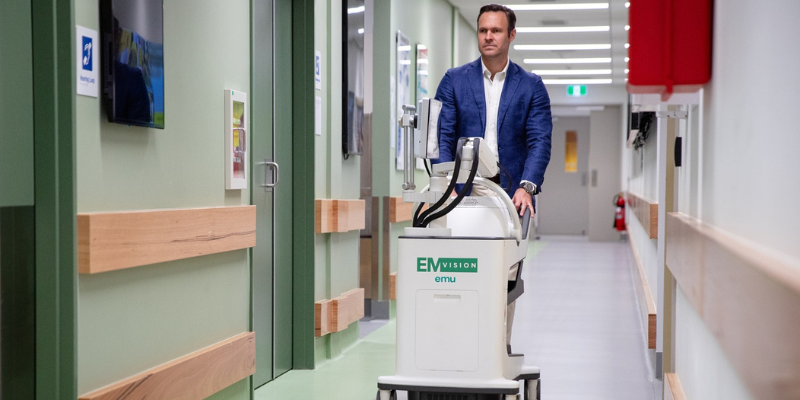For many Australians living in rural and remote areas, this means missing out on timely diagnosis and treatment.
That's why EMVision medical devices, a homegrown company, is developing innovative portable brain scanners that can be used by any healthcare professional at the bedside or in pre-hospital settings.
Hear from Scott Kirkland, the CEO and co-founder of EMVision, on how they are using their IP strategy and protection to maximise their market share and impact. Learn how they have invested in patenting their technology and methods - all to have a global impact on stroke outcomes.
Unfortunately for many Australians who live in the regions, they are far away from conventional imaging and are missing out on treatment altogether.
We can deploy imaging in the regions Royal Flying Doctor Service as well.
There is an opportunity to dramatically improve outcomes where where there is a lot of inequality at the moment.
We're developing a new technology which has required significant investment to get us to where we are and it's critical to protect the value of that investment and ensure that there are no competitors that can copy our product. And really ultimately we're looking to maximise market share.
IP was part of our thinking from day dot and working very closely with the original inventors and that their pattern attorneys to ensure that it was a key consideration to protect their innovation.
Are devices the product of homegrown innovation. We're keeping all our manufacturer local and investing in building those production capabilities in Australia. Our value proposition is really around portable, cost effective, non invasive, non ionising and can be operated by any trained healthcare professional.
There are very effective treatments for stroke, but they are time sensitive and they require urgent brain imaging. Existing imaging such as CT and MRI produce great images, but they are very large machines and they're not machines that can be deployed widely at the point of care.
We have two products. We have a a bedside point of care brain scanner which we affectionately call the EMU and that is designed for deployment at the bedside in ICU and stroke wards in smaller E D's and rural and regional centres. And then we have a first responder model which is an ultra lightweight helmet. It's a miniaturised version of the EMU effectively and it's designed for deployment and pre hospital so road and air ambulance operated by paramedics at the scene. Our IP strategy has really evolved as our company has grown and early on when you may have a limited budget, there are methods that you can pursue to protect your innovation before the product is crystallised.
We spend a lot of time thinking about how we can really ring fence our product and that includes filing patents around methods of acquisition or image reconstruction techniques for our device, but also keeping methods of manufacture trade secret. So, these are the secret ingredients that without anyone trying to replicate what it is that we're doing, would not be successful.
Find out more at ipaustralia.gov.au or call 1300 65 10 10.
Please note: case studies are examples of the way some organisations have chosen to manage their IP. These studies don't provide advice and your experience may be different.

